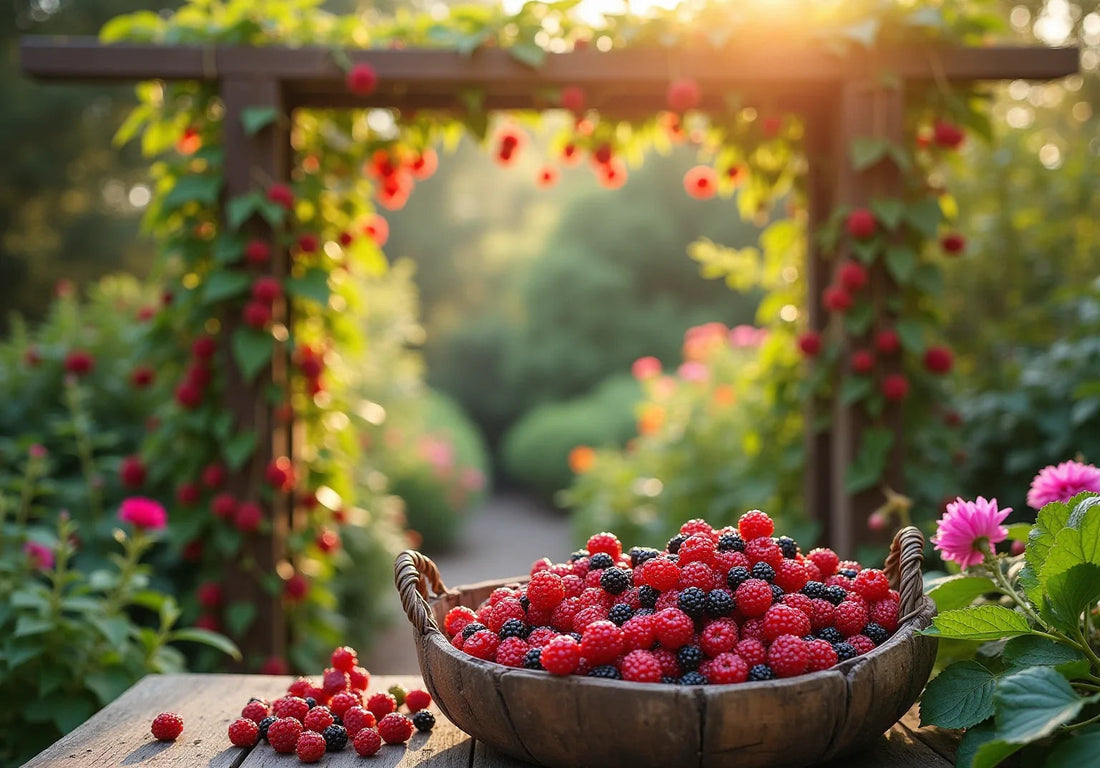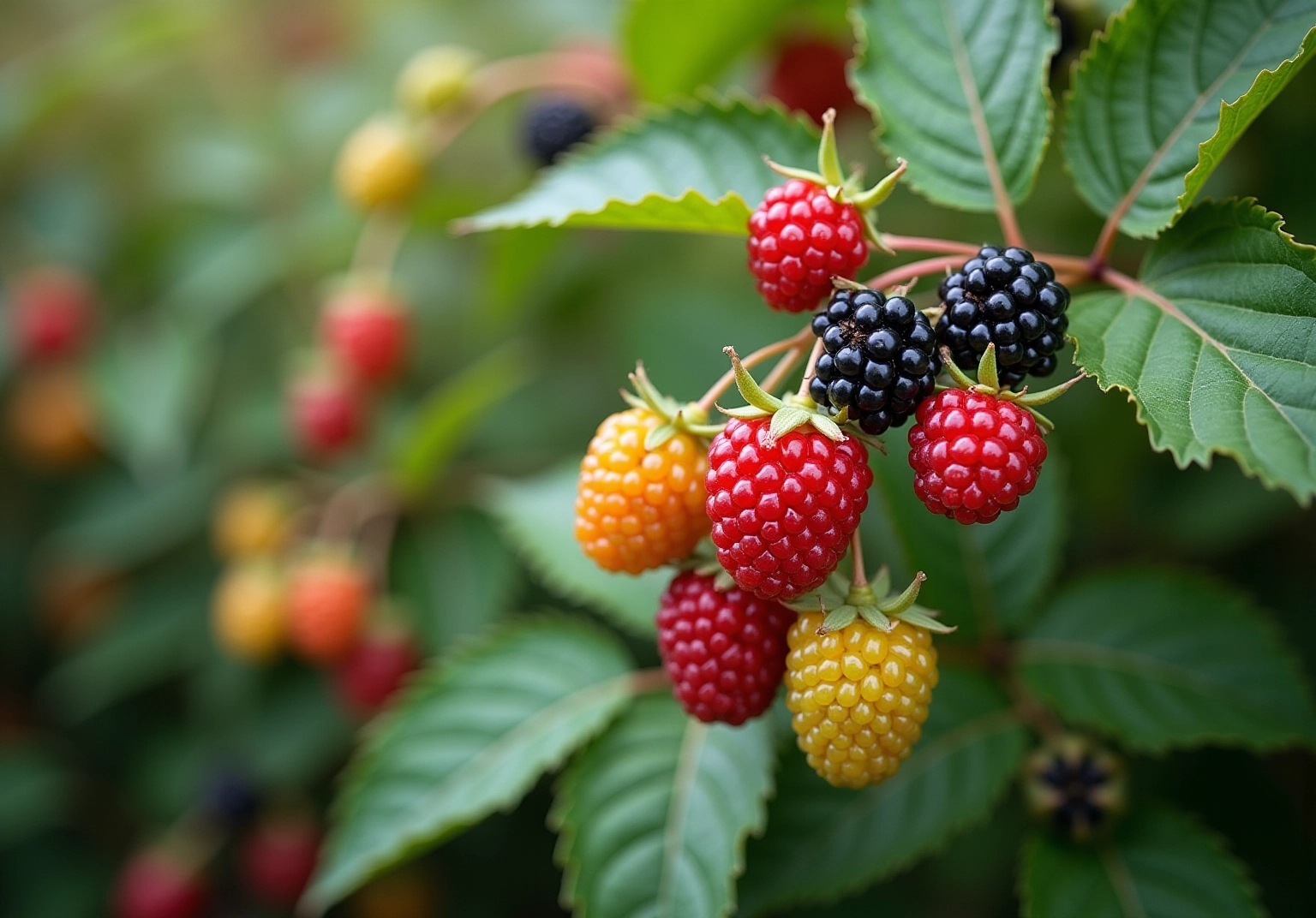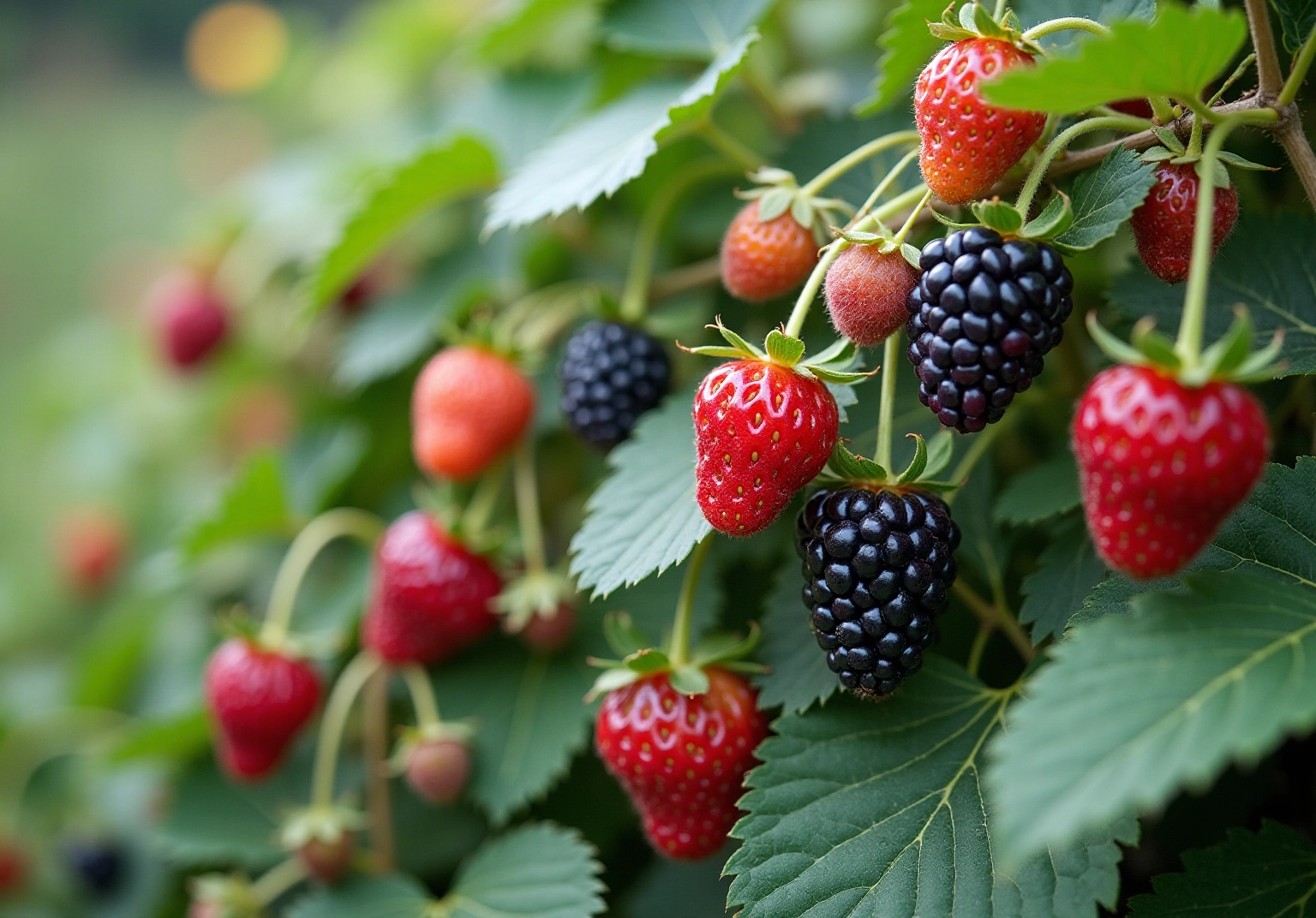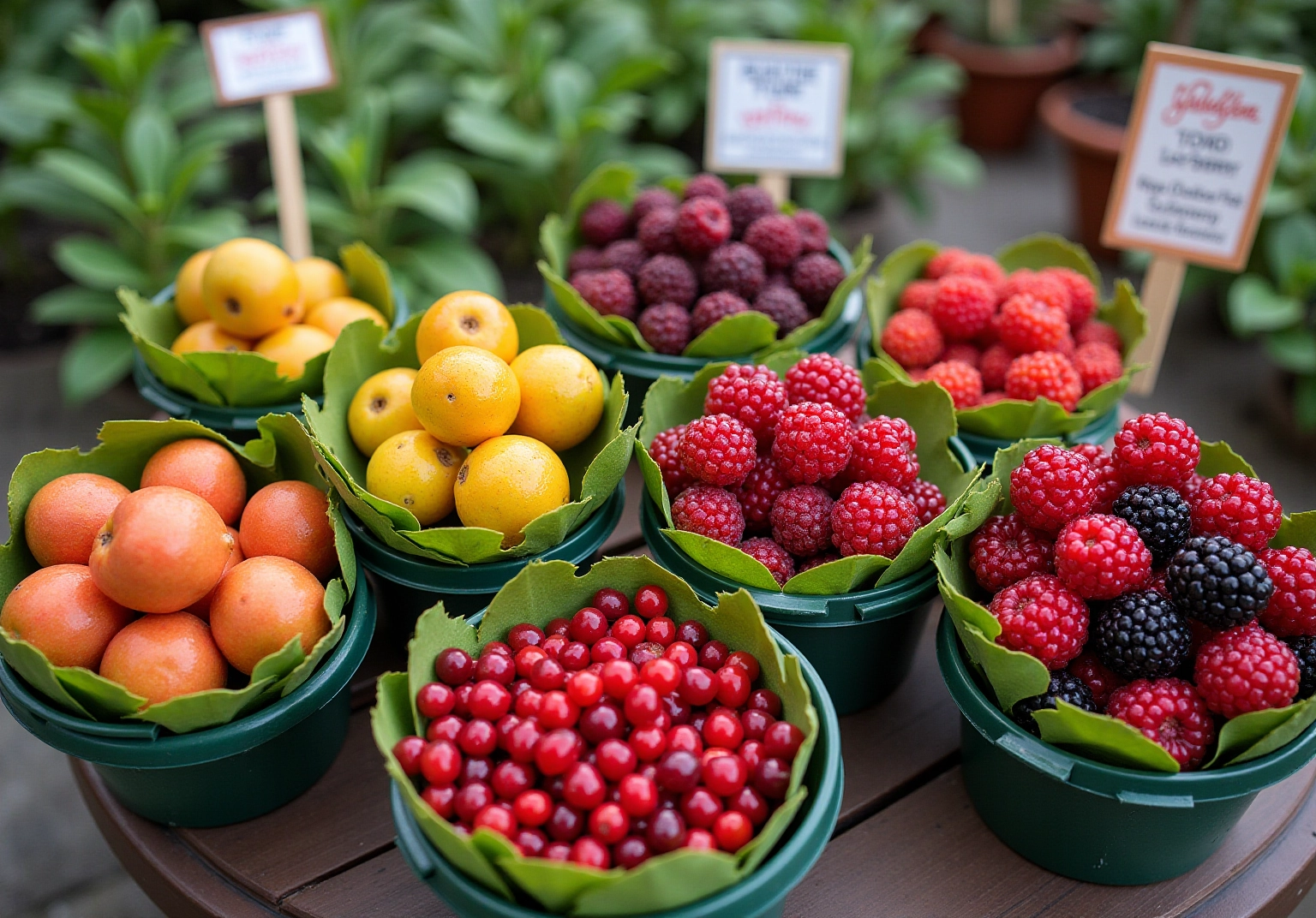
Rare Berry Plants for Sale: Compare Unique Varieties Today
Share
Uncommon berry plants present an intriguing alternative to traditional gardening, offering not only distinctive flavors but also remarkable visual appeal. Varieties such as the Chilean guava and tayberry provide gardeners with a diverse selection that enhances their gardening experience while attracting beneficial pollinators.
However, selecting the best varieties requires an understanding of the unique requirements and characteristics of these rare plants. This article explores the captivating realm of rare berry plants for sale, delivering a thorough comparison of unique varieties to assist gardeners in making informed decisions.
🫐 Thinking about growing berries in your garden?
Explore the Grape and Berries Plants Collection from Everglades Farm - shipped directly from Florida.
The article emphasizes the unique varieties of rare berry plants available for sale, showcasing their distinct flavors and specific cultivation requirements. It compares several rare types, such as the Chilean guava and tayberry, detailing their growing conditions, maintenance needs, and flavor profiles. This comparative analysis assists gardeners in making informed choices that can enhance their gardens effectively.
Explore Rare Berry Plants: Unique Varieties for Your Garden
Uncommon fruiting vegetation serves as a delightful enhancement to any garden, offering distinctive flavors alongside visual appeal. For instance, the Chilean guava is celebrated for its sweet, fragrant fruit, while the jostaberry, a hybrid of black currant and gooseberry, exemplifies unique cultivation options. Additionally, the tayberry—a cross between a blackberry and a raspberry—and the honeyberry, which thrives in cooler climates, present intriguing choices for gardeners. Each of these species not only enriches a diverse garden palette but also attracts pollinators, thereby improving the overall ecosystem. By incorporating rare berry plants for sale, gardeners can enjoy a bounty of flavors often unavailable in local markets.

Comparison Criteria: Key Factors for Selecting Berry Plants
When selecting berry plants, several key factors should be considered:
-
Climate Adaptability: Different berry varieties thrive in specific climates. For example, blueberries require acidic soil with a pH between 4.0 and 5.5 and favor cooler climates. In contrast, strawberries can adapt to a broader range of conditions, making them suitable for various gardens.
-
Soil Requirements: Understanding the soil type and pH is essential for successful growth. Most berries prefer well-drained, loamy soil, but some, like huckleberries, flourish in more acidic environments. Regular testing of soil is crucial to ensure optimal pH levels, as blueberries struggle to absorb nutrients in soils above 5.5, leading to poor growth and reduced fruit yield. It is advisable to amend soil pH well before planting to create the best conditions for growth.
-
Space and Growth Habit: Consider the growth characteristics of the plants. Dwarf varieties are ideal for small gardens, while sprawling types, such as certain raspberries and blackberries, may require more space to thrive.
-
Maintenance Needs: Maintenance varies among fruit types. Raspberries, for instance, benefit from regular pruning to encourage new growth, while blackberries tend to be more forgiving, requiring less frequent intervention. Annual trimming is vital for maintaining healthy plants and optimizing production.
-
Pest Resistance: Choosing varieties with higher pest and disease resistance can significantly reduce the need for chemical treatments, fostering a healthier garden environment. For example, certain raspberry varieties are recognized for their pest resistance, which can help ensure a more abundant harvest.
By evaluating these criteria, gardeners can make informed choices to select the best fruit varieties suited to their specific conditions and preferences, ensuring a productive and enjoyable gardening experience.

Side-by-Side Comparison of Top Rare Berry Varieties
The comparison of various berry varieties, particularly rare berry plants for sale, highlights their unique characteristics, assisting gardeners in making informed decisions based on their specific gardening goals. For example, the Chilean guava offers a sweet and aromatic flavor profile, making it ideal for those seeking a low-maintenance plant with fragrant fruits. Its growth conditions require well-drained soil and full sun, while being susceptible to root rot if overwatered. This variety has a moderate to high yield potential, needing about 450 chilling hours for optimal growth.
In contrast, the Jostaberry presents a tart yet sweet flavor, thriving in similar well-drained soil and full sun conditions. Gardeners should consider protecting it from birds, as yields can vary based on care, making its maintenance level medium. The Tayberry stands out with its sweet and tangy flavor, preferring rich, well-drained soil and full sun. While it is prone to aphid infestations, it boasts a high yield potential, capable of producing up to 8 lbs per plant under ideal conditions.
Lastly, the Honeyberry, known for its sweet, honey-like taste, flourishes in cooler climates and requires well-drained soil. It may need cross-pollination for optimal yields, typically producing around 5 lbs per plant, and is categorized as low maintenance. By incorporating insights from agricultural specialists, gardeners can further validate the yield potential and flavor profiles of rare berry plants for sale, ensuring a fruitful gardening experience.

Conclusion
Incorporating rare berry plants into a garden not only enhances its aesthetic appeal but also introduces unique flavors that are often hard to find in local markets. The exploration of distinctive varieties, such as the Chilean guava, jostaberry, tayberry, and honeyberry, reveals the potential for gardeners to cultivate a diverse and fruitful landscape. Each of these plants contributes to a thriving ecosystem, attracting pollinators and enriching the overall gardening experience.
The article highlights essential criteria for selecting the right berry plants, including:
- Climate adaptability
- Soil requirements
- Growth habits
- Maintenance needs
- Pest resistance
By understanding these factors, gardeners can make informed decisions tailored to their specific environments and preferences. A side-by-side comparison of the top rare berry varieties provides valuable insights into their unique characteristics, ensuring that gardeners choose the best options for their gardens.
Ultimately, embracing rare berry plants offers an opportunity to diversify not just the garden but also the palate. As gardeners explore these unique varieties, they are encouraged to consider their specific conditions and preferences, fostering a more sustainable and enjoyable gardening journey. By investing in rare berry plants, one can cultivate a garden that is not only productive but also a delightful source of flavors and beauty.
Transform Your Garden with Unique Berry Varieties!
Start your journey today with Everglades Farm and cultivate a vibrant, flavor-packed paradise.
Frequently Asked Questions
What are rare berry plants and why are they beneficial for gardens?
Rare berry plants are uncommon fruiting vegetation that enhance gardens by offering distinctive flavors and visual appeal. They also attract pollinators, improving the overall ecosystem.
Can you provide examples of unique berry plants?
Yes, examples include the Chilean guava, known for its sweet, fragrant fruit; the jostaberry, a hybrid of black currant and gooseberry; the tayberry, a cross between blackberry and raspberry; and the honeyberry, which thrives in cooler climates.
How do rare berry plants contribute to garden diversity?
By incorporating rare berry plants, gardeners can enjoy a variety of flavors that are often unavailable in local markets, enriching the garden's diversity.
What is the advantage of growing rare berry plants?
Growing rare berry plants allows gardeners to explore unique cultivation options and enjoy a bounty of flavors, while also benefiting the ecosystem by attracting pollinators.


